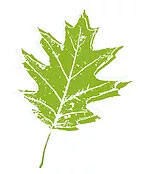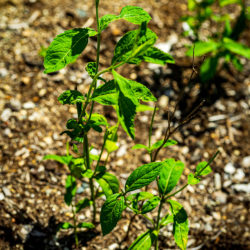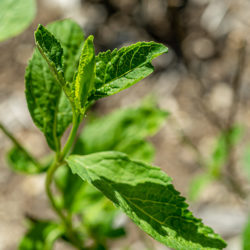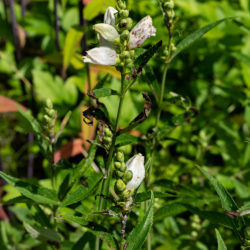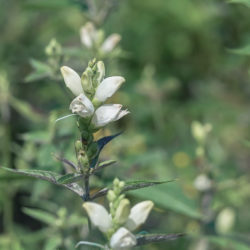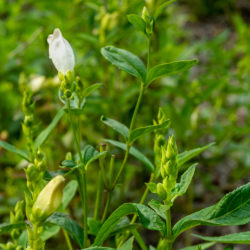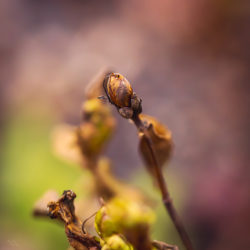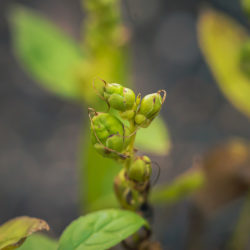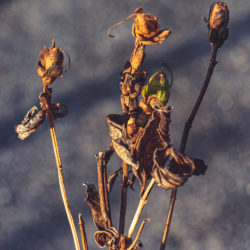Etymology
Chelone is the Greek name of a nymph who was turned into a turtle; glabra is Latin for hairless or smooth, relating to the stem and leaves.
Native Habitat
Part shade and rich, moist to wet, humusy soil.
Garden Uses
Develops showy, dense, late summer blooms in moist, part-shade woodland or rain gardens, or on pond edges. In sunnier locations, supply composted leaf mulch to protect moisture levels. In deeper shade, will benefit from pinching back in spring to limit leggy growth and the need for staking. Adequate moisture and air circulation will generally prevent susceptibility to mildew.
Overview
This herbaceous, clumping perennial wildflower is found throughout much of eastern North America. Plants grow to a height of 2 to 3 feet, with a spread of 2 feet. Flowers are often said to resemble a turtle’s head.
Leaves and Stems
Leaves are dark green, smooth, lance-shaped, and coarsely-toothed, growing opposite along the length of the stems. Stems are similarly smooth, but square and erect, except in shady areas, where stems may become leggy and droop.
Flowers
Blooms typically appear in the late summer, and are white to light pink, hooded, and two-lipped, appearing somewhat like a snapdragon bloom, on tight, spike-like terminal racemes.
Fruit/Seed
A papery seed capsule turns brown when seeds are ripe.
Wildlife Associates
Attracts hummingbirds and butterflies. Larval host to Baltimore checkerspot butterfly (Euphydryas phaeton). Deer regularly browse this plant in the Native Garden.
Propagation
Spreads slowly by rhizomes and can be divided in spring or autumn. Seed capsules can be collected in the autumn and air dried. Seeds can then be removed and planted or refrigerated for spring planting.
Ethnobotanical Uses
Traditional medicine uses included tonics for constipation, indigestion, deworming, and stimulating appetite. In some parts of the country, this plant is referred to as ‘bitter herb.’
Garden Location
Library Garden (see garden map)
Sources
Lady Bird Johnson Wildflower Center
US Forest Service, Plant of the week: Turtlehead
Plant Profile by Kate O’Dell
